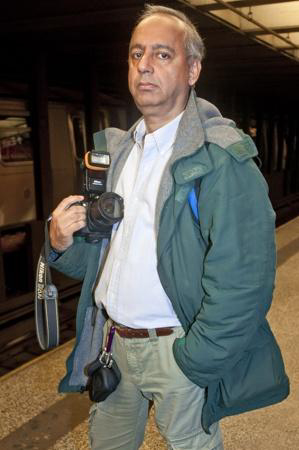A few weeks ago, I did a quick survey of what a copyright is and how to get one. But recent reactions to a news report expand what one has to understand about copyrights and ownership. I mentioned that one of the exceptions to copyright was a “work for hire,” where a piece is made under the direction and employ of a third entity.
Last week, a man was pushed off the platform of a New York subway and killed by the train. The event was caught by R. Umar Abbasi, a freelance photographer, who was in the subway on another assignment for the New York Post newspaper. There has been public criticism of both the newspaper and the photographer. The photographer is criticized for not stopping the incident and for publishing the image. Since I wasn’t there when it was happening, I can’t say if the situation was one where he could have stopped the perpetrator or not. From his description in a radio interview, it sounded like he was fairly far from the action and was actively engaged in his assignment, taking pictures.
Not to excuse Abbasi’s actions out of hand, but I can easily imagine the circumstance where he couldn’t have changed the outcome, even with heroic action, depending on the individual station, some are quite extensive. Many years ago I worked with Stan Ries, a photographer in New York. When we were out of the studio, he constantly had his camera in hand and ready to shoot. It would have been an instinctive reaction to have begun shooting pictures, even as he was moving towards the event. Abbasi has stated that he hoped the flash would attract the attention of the train crew.
But his actions aren’t the focus of this missive. This is a perfect example of “work for hire.” It was pure serendipity that he was at the scene, as he was on another assignment from his employer. He took the pictures because he is a photographer and his camera was at the ready, although not set for the conditions in the subway. The important consideration of the eventual publishing of the images is that he, the photographer, did not “own” the images. His employer owned them because he was an employee, working on assignment, at the direction of his employer, even though the exact circumstance was not specified in his instructions.
This is the opposite of a situation described by New York lawyer Arie Kopelman in a workshop he gave for Texas Accountants and Lawyers for the Arts (TALA) years ago. Kopelman represented a photographer who had been on one of the first flights that had been “sky-jacked” to Cuba. This was back in more gentle days of such incidents, and she reacted by standing up and documenting the entire process. When the plane was returned to New York she had the only record of the event. She had not been on an assignment from a third party, she was merely a passenger to another destination. As a result, she owned her images and Kopelman negotiated the various “rights” for the publication of her images in multiple venues. She had control over her work.
In this latest tragic incident, the photographer had no right to control the use of his images. He had been a hired worker and all rights to the images were the property of his employer.
So you may decry the publication of the images as a cynical ploy to appeal to the prurient impulses of the New York Post‘s readers and an opportunistic profit from another’s suffering, but you shouldn’t blame the photographer for the publication of the pictures. He was just doing his job; blame the New York Post editorial desk.
But what does this mean for the artist audience?
First off, you have to be certain of your status on whatever project you are engaged in. If it’s only you without an employer, your work remains yours. If you are an employee doing work for your employer, it’s theirs. But there are several “grey” circumstances. What if it’s not a normal part of your job? Or not done on their premises? Or you are not paid by the regular paycheck, rather by a “one-time” lump sum? All of these circumstances can alter the work for hire.
If you were commissioned to do a portrait of the boss’s family, your status would depend on the negotiations that led to the commission. A contract summarizing the negotiations would be advisable. A contractual document (which does not have to be written in legalese) establishes the exact relationship and copyright ownership. At the very least, seek advice from a legal advisor.
And above all, be careful out there.

